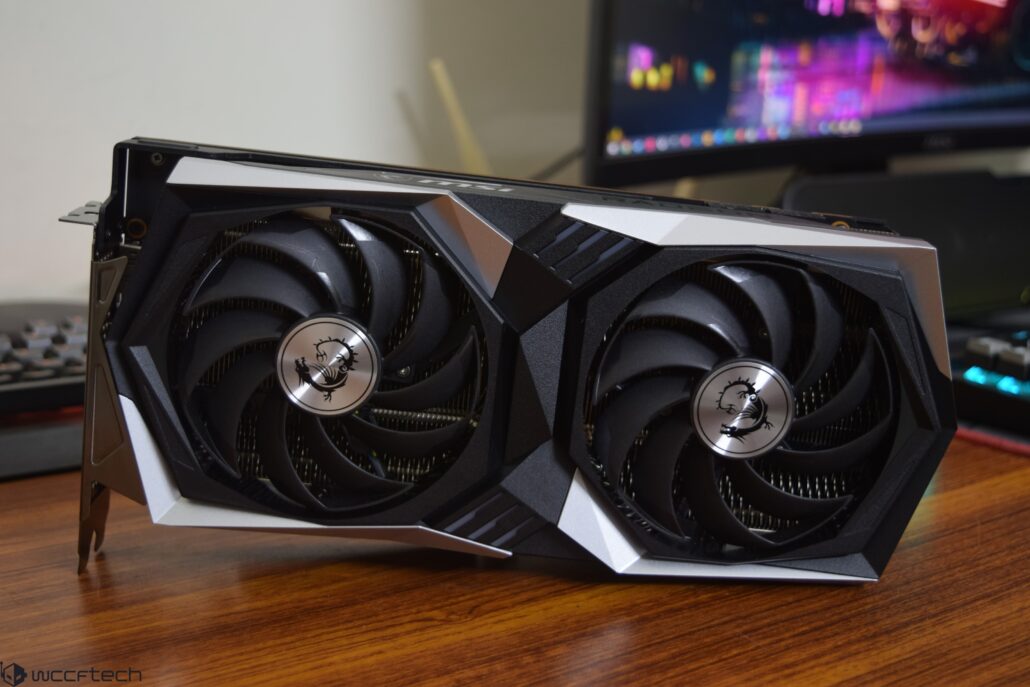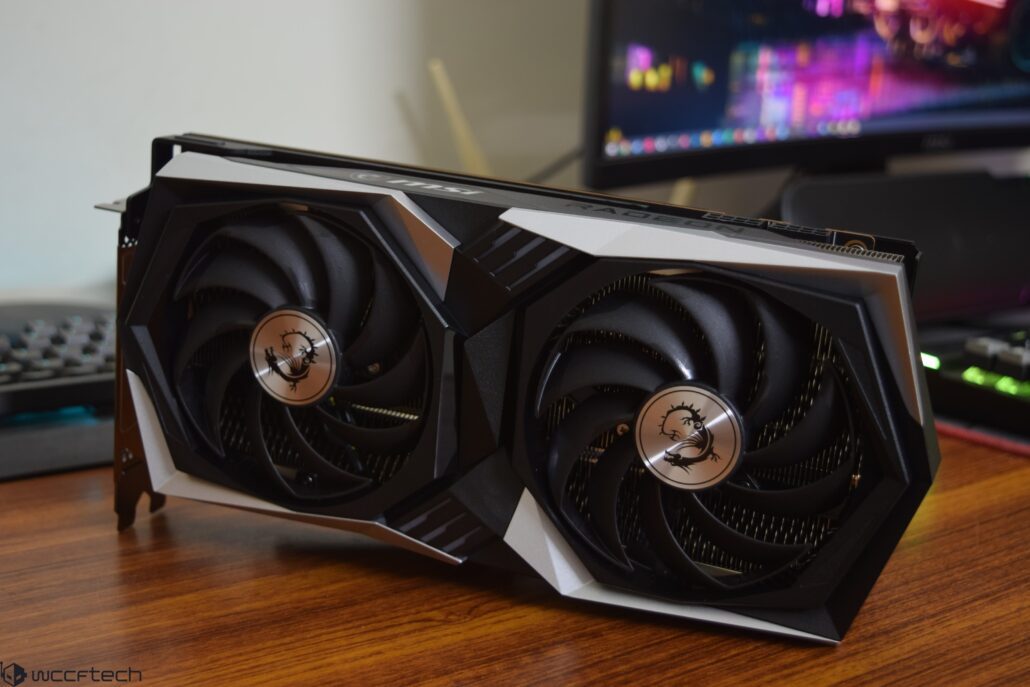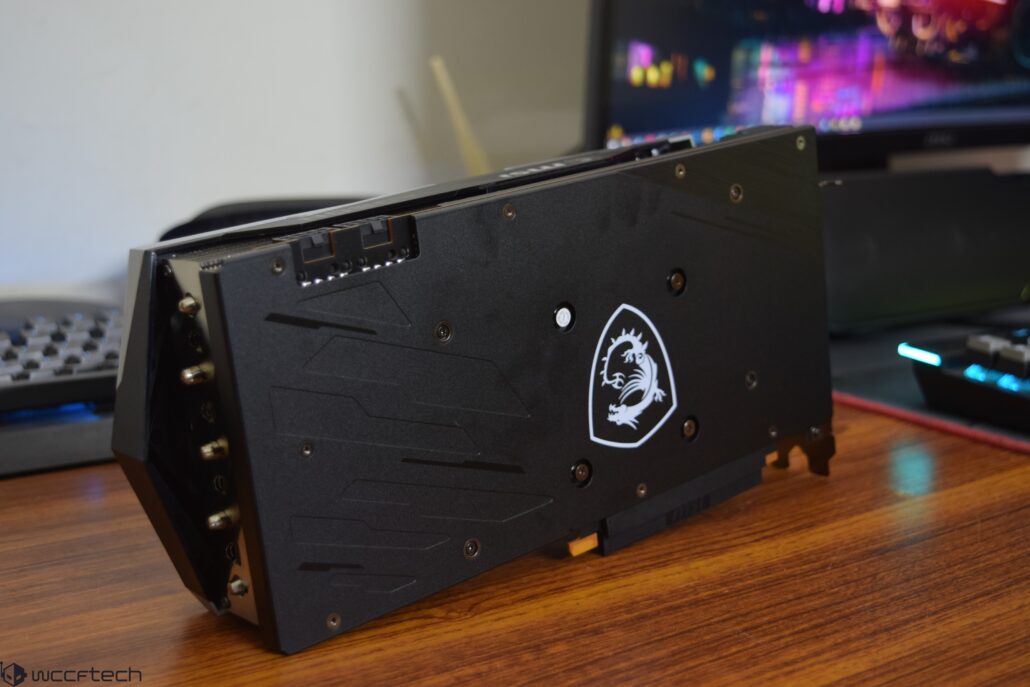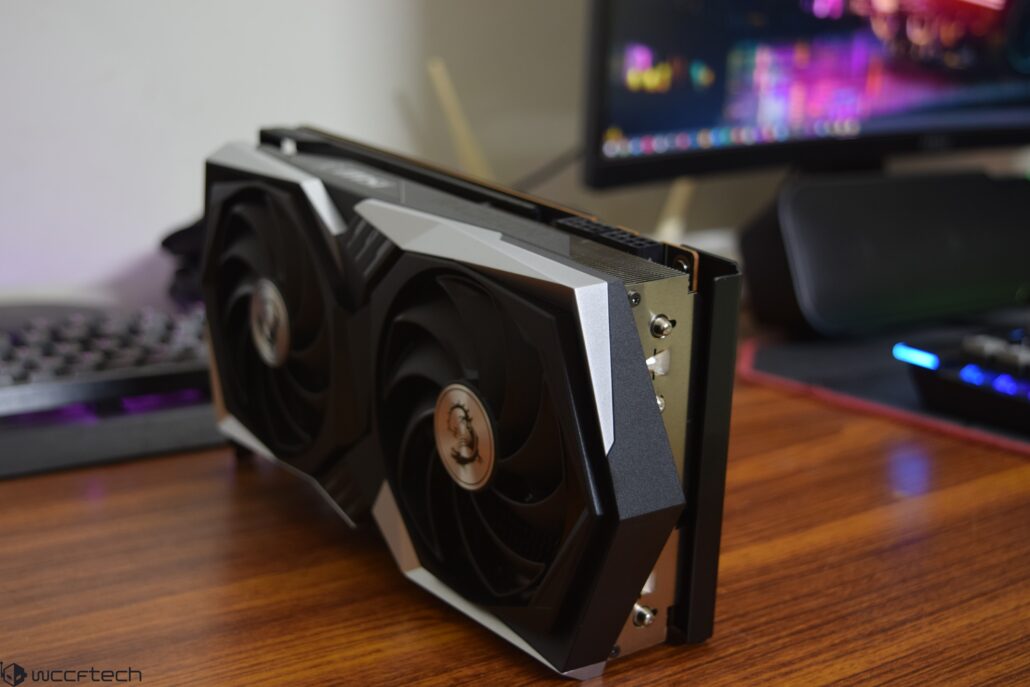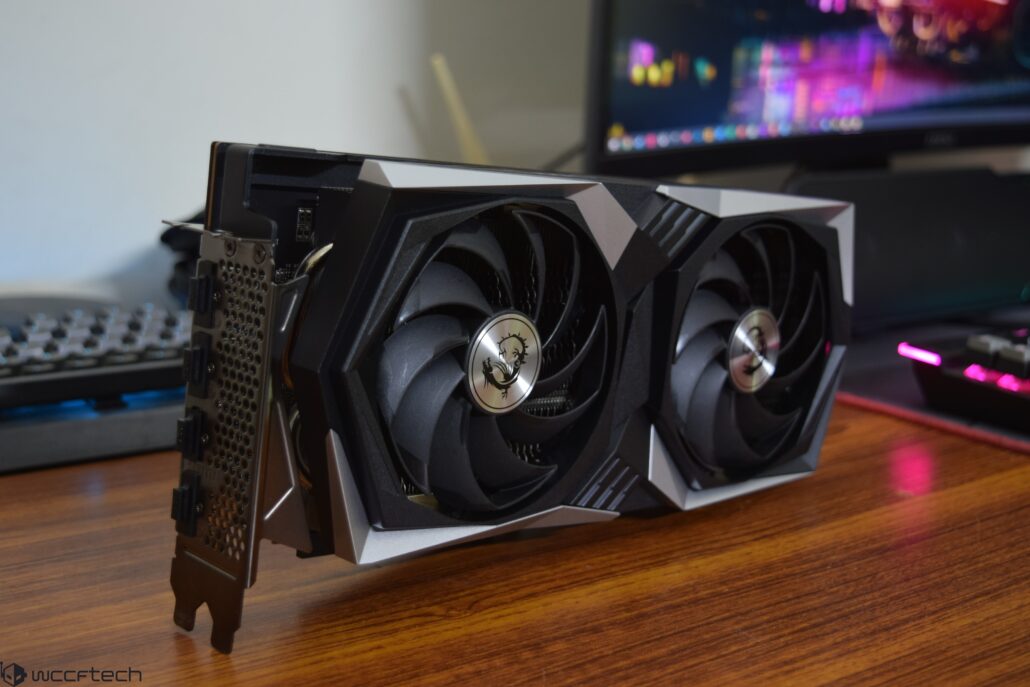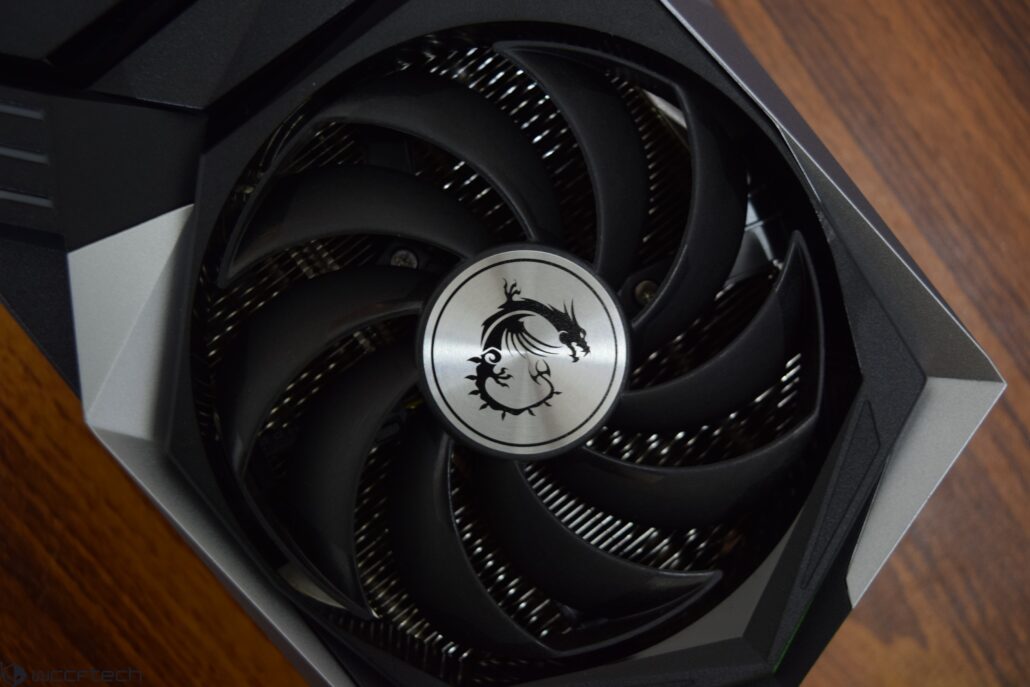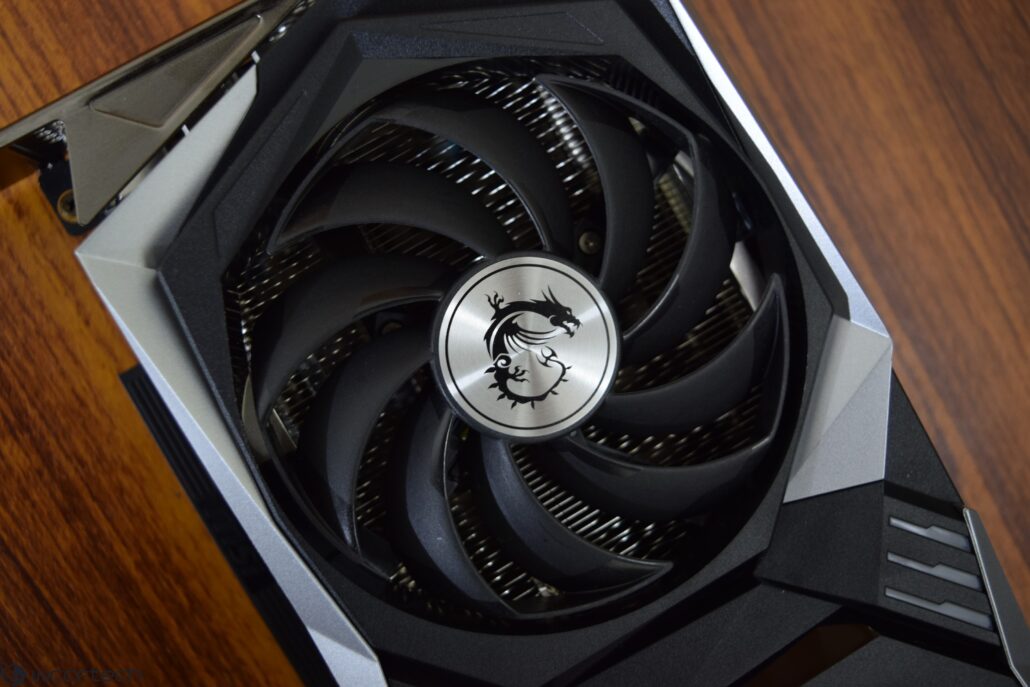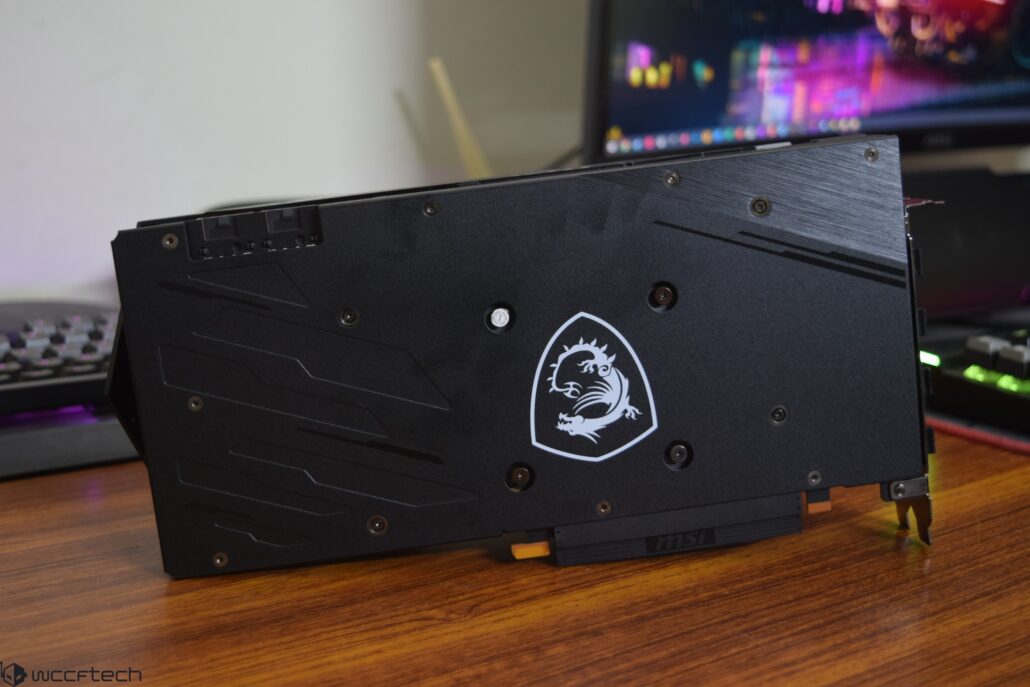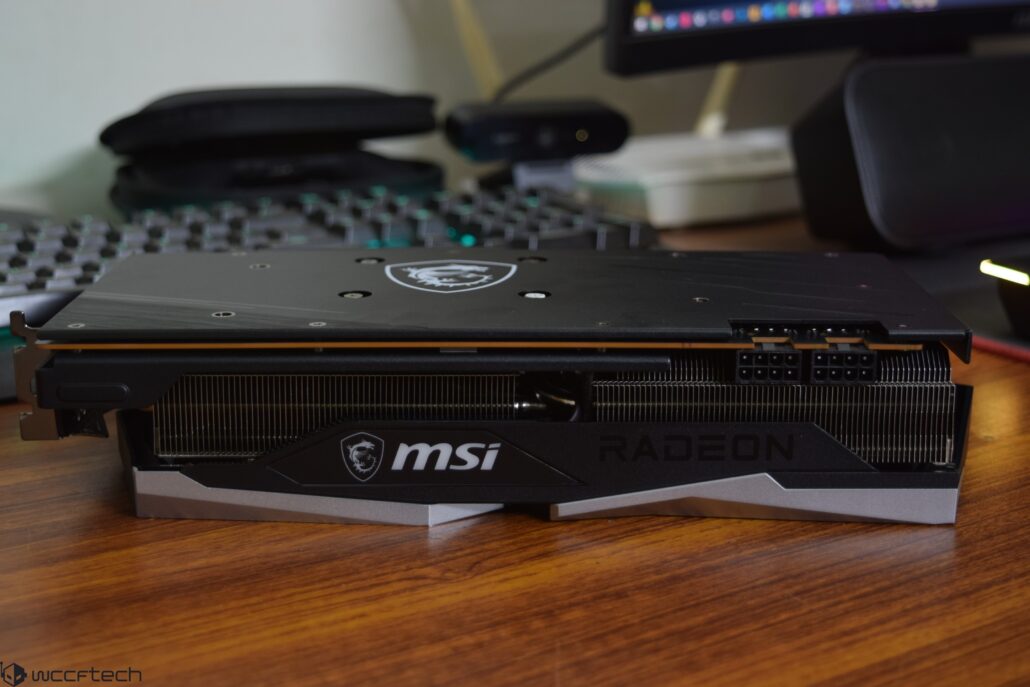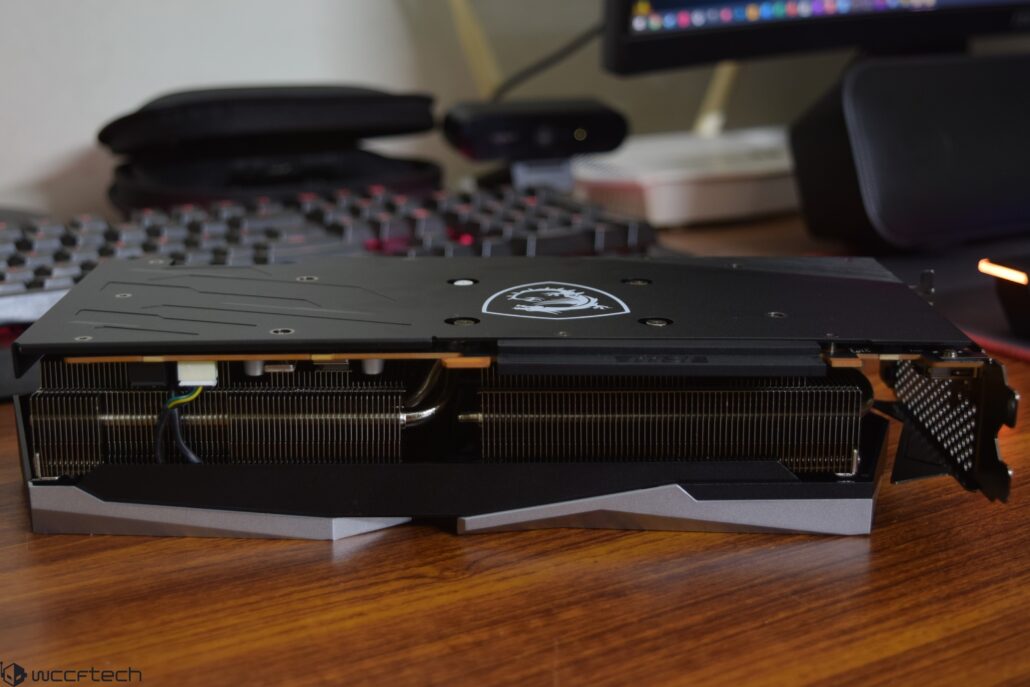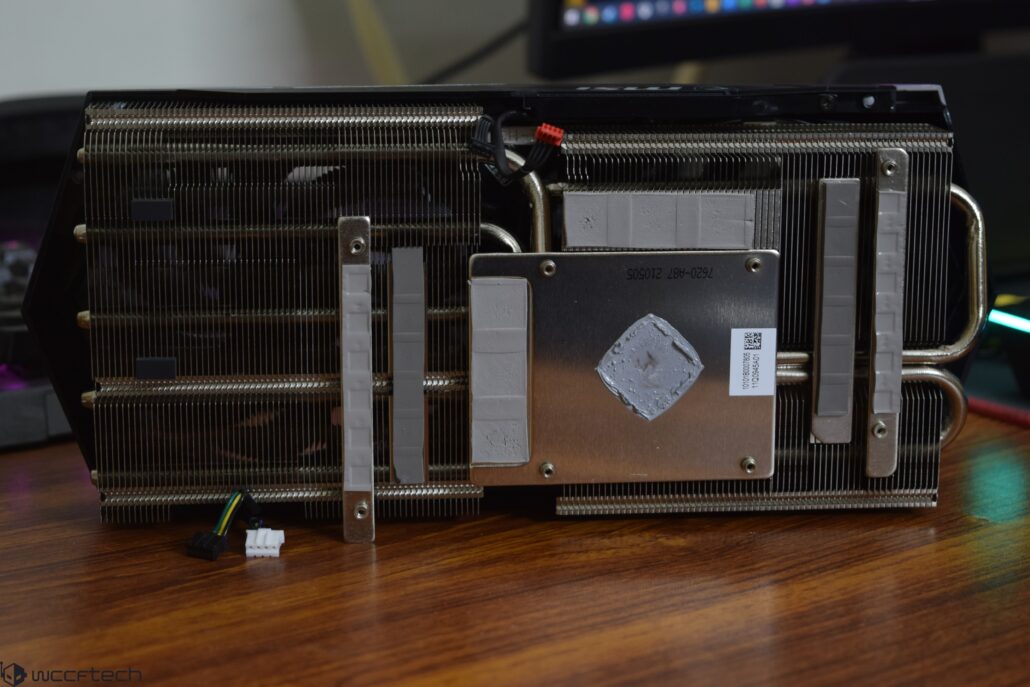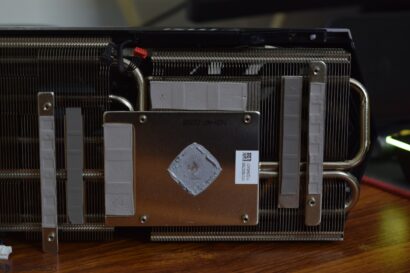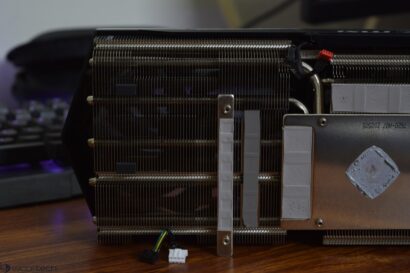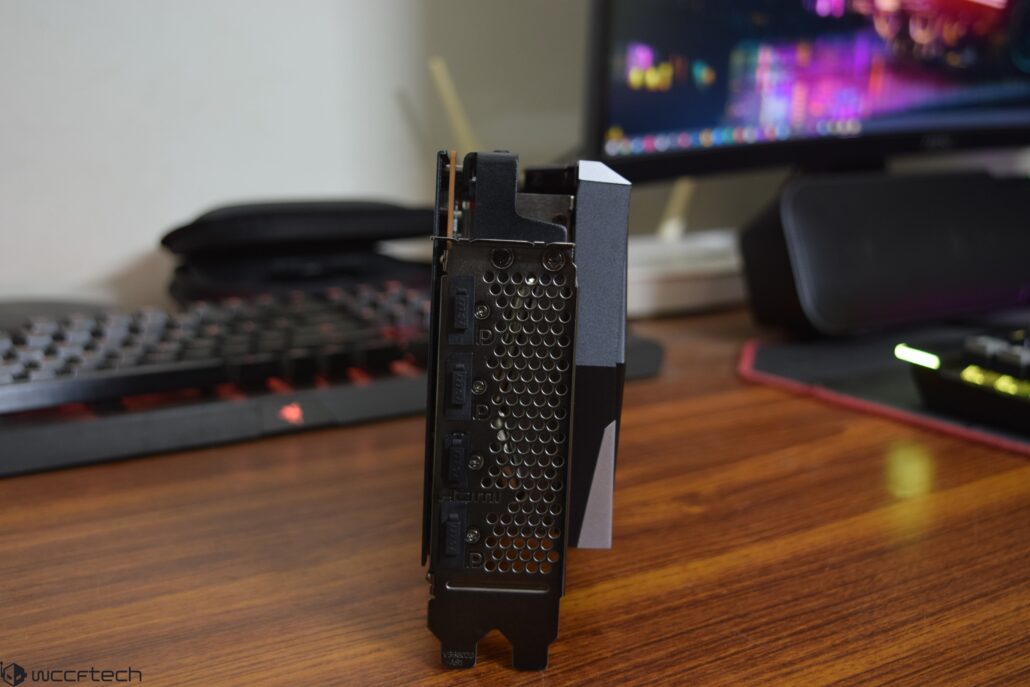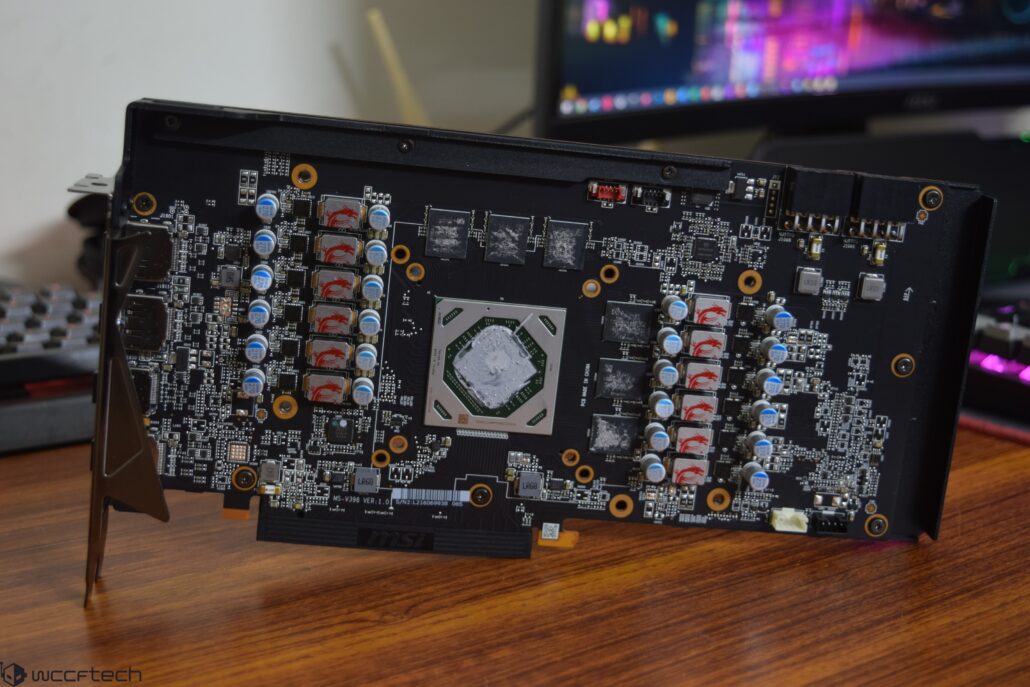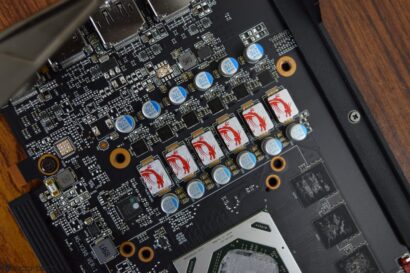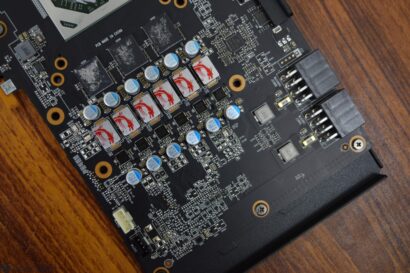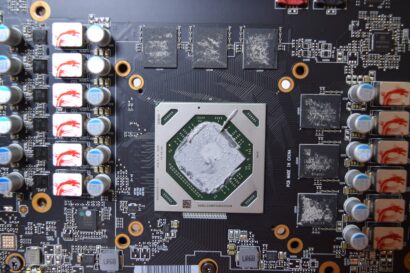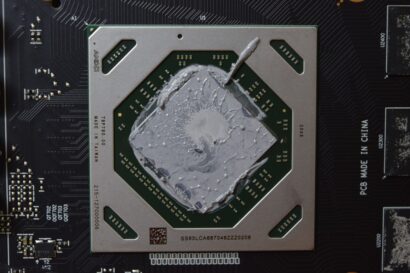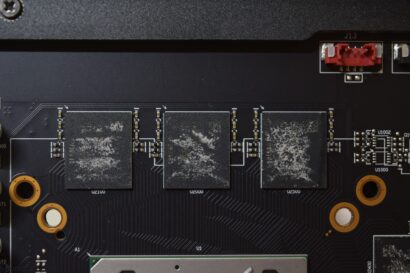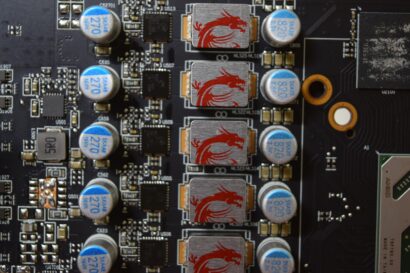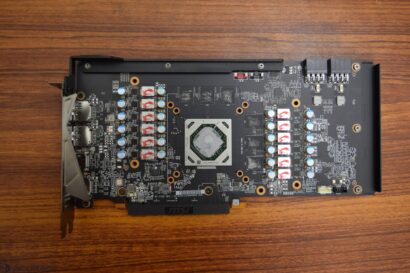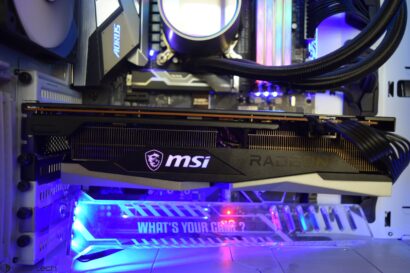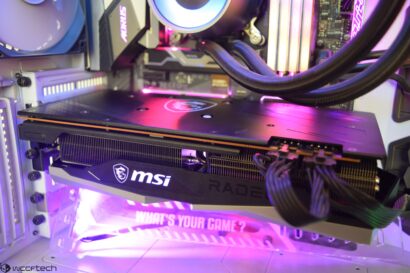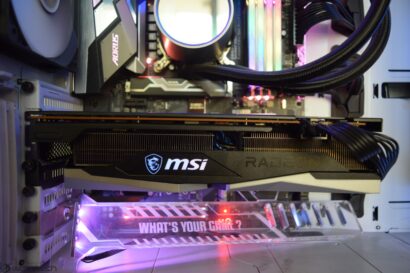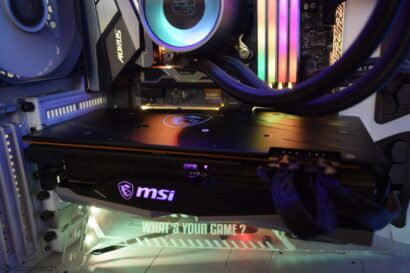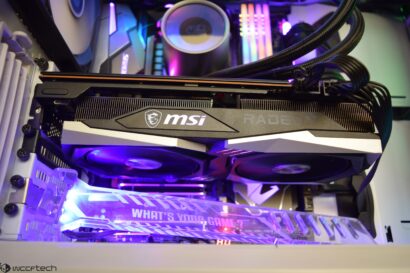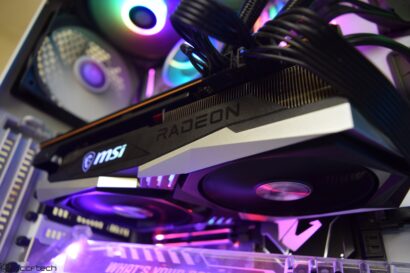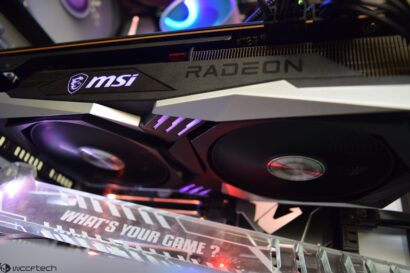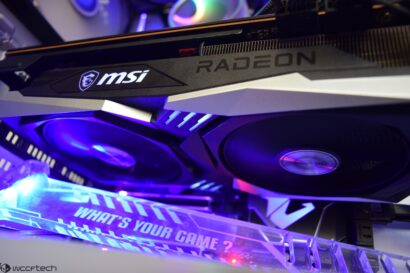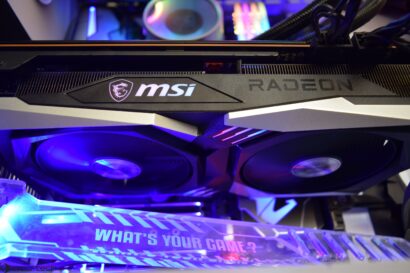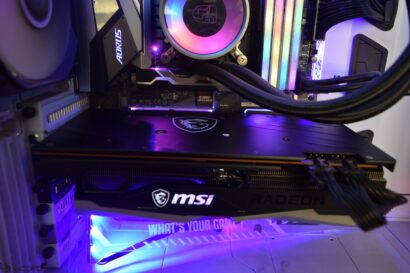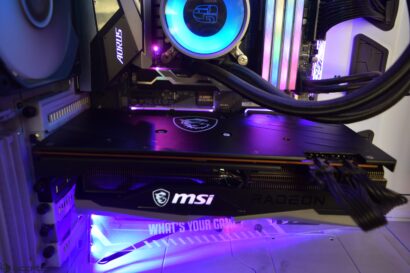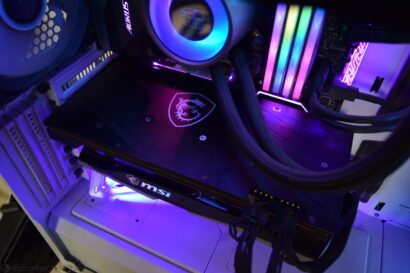MSI’s Twin Frozr is a very iconic design that was introduced much earlier than the Tri-Frozr. The first Twin Frozr cards were actually introduced all the way back with the GeForce 200 series cards and have seen various design upgrades over the years. MSI has further refined the Gaming X Twin Frozr design. The card measures the same at 279 x 131 x 58 mm and weighs in at 1179 grams. The card is also slightly taller at 2.5 slots height.
The MSI Radeon RX 6700 XT Gaming X isn’t a bulky card at all and would fit in nicely in standard ATX and even Mini-ITX cases with ease. The cooling shroud extends all the way to the back of the PCB and it requires a casing with good airflow so do keep that in mind.
The back of the card features a solid backplate that looks stunning. The backplate offers a lot more functionality than just looks which I will get back to in a bit.
In terms of design, we are looking at an updated version of the Twin-Frozr heatsink which is now in its eighth variation The design has seen various changes and now comes in a fully loaded graphics card design.
The new heatsink looks like a toned-down version of the Gaming X Trio with the main changes being the shroud and heatsink design which retains an aggressive shroud design on the front but with two fans instead of three, absorbing the black and silver color platelets while featuring the RGB emitting acrylic cutouts at the front. The sides also come with a large RGB accent bar which lights up when the card is powered on.
Coming to the fans, the card actually features the brand new Torx 4.0 system. Both fans feature a ring-based design to allow for higher airflow to be channeled within the main heatsink. All fans deploy a double ball bearing design and can last a long time while operating silently.
MSI also features its Zero Frozr technology on the Twin Frozr 8 heatsink. This feature won’t spin the fans on the card unless they reach a certain threshold.
In the case of the Twin Frozr heatsink, that limit is set to 60C. If the card is operating under 60C, the fans won’t spin which means no extra noise would be generated.
I am back at talking about the full-coverage, full metal-based backplate which the card uses. The whole plate is made of solid metal with rounded edges that add to the durability of this card. The brushed matte-black finish on the backplate gives a unique aesthetic.
There are cutouts in screw placements to easily reach the points on the graphics card. We can also see the MSI Dragon logo on the back which looks stunning. MSI is also using heat pads beneath the backplate which offer more cooling to the electrical circuitry on the PCB.
With the outsides of the card done, I will now start taking a glance at what’s beneath the hood of these monster graphics cards. The first thing to catch my eye is the humungous fin stack that’s part of the beefy heatsink which the cards utilize.
The large fin stack runs all the way from the front and to the back of the PCB and is so thick that you can barely see through it. It also comes with the wave-curved 2.0 fin stack design which I want to shed some light on as it is a turn away from traditional fin design.
The heatsink has been designed to be denser by using a wave curved fin design. It allows more air to pass through the fins smoothly, without causing any turbulence that would result in unwanted noise. Airflow Control Technology guides the airflow directly onto the heat pipes, while simultaneously creating more surface area for the air to absorb more heat before leaving the heatsink.
Talking about the heatsink, the massive block is comprised of seven copper squared-shaped heat pipes with a more concentrated design to transfer heat from the copper base to the heatsink more effectively. The base itself is a solid nickel-plated base plate, transferring heat to the heat pipes in a very effective manner. To top it all off, MSI uses their exclusive Thermal Compound X which is said to offer higher thermal interface and heat transfer compared to traditional TIM applications.
MSI adds extra protection to its impressive PCB by including a rugged anti-bending plate. This also acts as a memory and MOSFET cooling plate while the PWM heatsink with micro fins keeps the VRM cool under stressful conditions.
I/O on the graphics card sticks with the reference scheme which includes three Display Port 1.4a & a single HDMI 2.1 port.
MSI Radeon RX 6700 XT Gaming X Teardown:
MSI makes use of a 12 phase PWM design that includes its Military Class components such as Hi-C Caps, Super Ferrite Chokes, and Japanese Solid Caps. The main VRM controller is an Infineon XDPE132G5D which powers the 12 GPU phases. For VRAM, the controller is an OnSemi NCP81022N while the MOSFETs are made up of IR’s TDA21472 DrMOS.
The card also uses the GDDR6 memory from Micron that operates at 16 Gbps alongside a 192-bit wide memory interface.
The MSI Radeon RX 6700 XT Gaming X Trio is a very power-hungry graphics card showcased by its custom design. Being so, it uses a very power-intensive connector configuration that comprises dual 8 pin connectors. The card is rated at a TDP of 250W officially by MSI.
MSI Radeon RX 6700 XT Gaming X Series RGB Lighting Gallery:
MSI Gaming X series cards utilize their Mystic Light RGB technology to offer you a visually pleasing lighting experience on your graphics cards. There are a total of 8 different RGB effects which you can choose from and the cards have 3 RGB accent points, 2 on the front, and one lightbar surrounding the side of the card which looks really good. You can fully customize the RGB lights to your preference using the MSI Mystic Light application from MSI’s web page.
Following is what the graphics card looks like when lit up.
